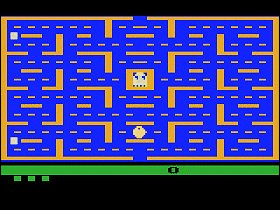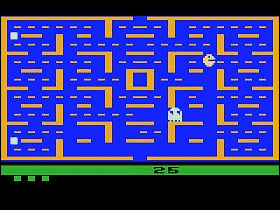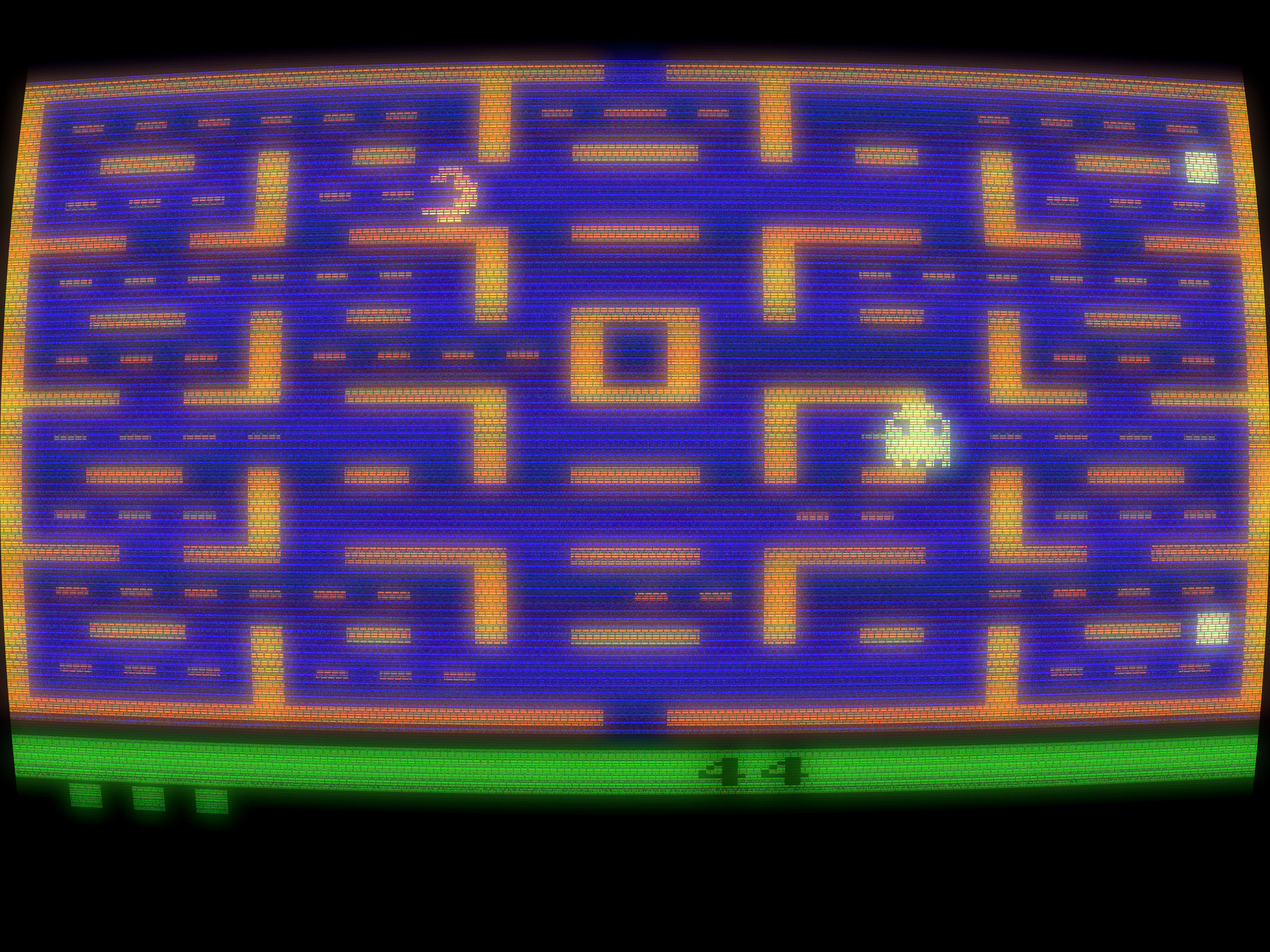 The Game: As a round yellow creature consisting of a mouth and nothing else, you maneuver around a relatively simple maze, gobbling small dots and evading four monsters who can eat you on contact. In four corners of the screen, large flashing dots enable you to turn the tables and eat the monsters for a brief period. (Atari, 1982)
The Game: As a round yellow creature consisting of a mouth and nothing else, you maneuver around a relatively simple maze, gobbling small dots and evading four monsters who can eat you on contact. In four corners of the screen, large flashing dots enable you to turn the tables and eat the monsters for a brief period. (Atari, 1982)
Memories: It all began with the arrival of the Pac-Man arcade game in 1980. Pac-Man was guzzling millions of quarters and generating a licensing and merchandising firestorm. Numerous home video game companies bid for the rights to the game, and you have to understand, bidding for the rights to produce the home video game version of Pac-Man was like bidding for the toy rights for the next Star Wars movie – very expensive and very high-profile. Money was flying fast and furious. Atari won.
 There’s only one catch. Atari had but six weeks to get its version of Pac-Man ready in time for the 1981 Christmas season. Failure to put Pac-Man on the shelves in time for Christmas would’ve been disastrous for all involved. So the Atari 2600 version of Pac-Man was cobbled together in record time, packaged, and produced not only record cartridge sales, but astronomically increased the number of console sales. Pac-Man now went from millions of quarters to millions of dollars for Atari.
There’s only one catch. Atari had but six weeks to get its version of Pac-Man ready in time for the 1981 Christmas season. Failure to put Pac-Man on the shelves in time for Christmas would’ve been disastrous for all involved. So the Atari 2600 version of Pac-Man was cobbled together in record time, packaged, and produced not only record cartridge sales, but astronomically increased the number of console sales. Pac-Man now went from millions of quarters to millions of dollars for Atari.
There was a slight problem, though. The Atari version of Pac-Man was almost insultingly unfaithful to the original arcade game. The jaunty theme music was replaced by something sounded not entirely unlike a touch tone phone. The lively sound effects were replaced by a monotonous, droning tone everytime Pac-Man gobbled a dot. And due to the  Atari 2600’s inherent sprite limitations, the monsters flickered so badly that it was almost impossible to see them, and was certainly impossible to tell if they were blue or not. It was a given that the maze would have to be reoriented from a tall, vertical structure to a wider horizontal maze to
Atari 2600’s inherent sprite limitations, the monsters flickered so badly that it was almost impossible to see them, and was certainly impossible to tell if they were blue or not. It was a given that the maze would have to be reoriented from a tall, vertical structure to a wider horizontal maze to  fit the TV screen, but the end result was something that smacked more of a cheap rip-off.
fit the TV screen, but the end result was something that smacked more of a cheap rip-off.
Atari was savaged by the consumer press in general and video game fans in particular. And perhaps not without reason.

